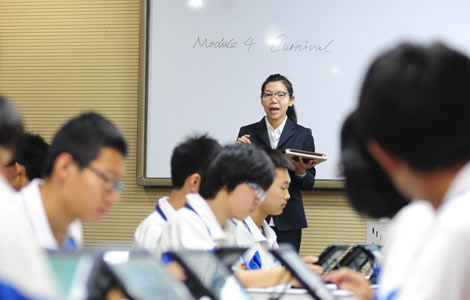Openness ranking of courts published
Updated: 2013-12-10 00:42
By CAO YIN (China Daily)
|
||||||||
A top Chinese institute published the first report to rank courts on their openness on Monday, as part of efforts to promote judicial transparency.
The report by the Chinese Academy of Social Sciences' Institute of Law covered 103 courts in Zhejiang province.
Evaluation criteria included the openness of trials and how quickly verdicts were released online.
From April to September, the institute collected data from the courts' websites, including the provincial high court and 11 intermediate courts, and carried out courtroom inspections.
Courts were then given scores based on the findings, the institute said in a statement.
It is the first time Chinese courts have been evaluated by a third party on transparency, called "an innovation" by Shen Deyong, vice-president of the Supreme People's Court.
Zhu Shenyuan, vice-president of the Zhejiang High People's Court, said an independent institute can better point out a court's problems and provide a more objective result.
Previously, the public could not know whether judgements were enforced or not in courts' vague documents, but now all steps are specified and some courts provided supporting figures, said Tian He, chief author of the report.
For instance, the report shows about 81 percent of Zhejiang courts have video equipment in courtrooms to record trials and about 98 percent have provided lawsuit guidelines for the public.
Failings of the courts were reflected as well as achievements in the report.
According to the study, 82 courts did not update their lawsuit guidelines in time after the Chinese Civil Procedure Law and Criminal Procedure Law were revised, and only five courts posted verdicts online within 30 days after trials ended.
One court did not publish even one judgment on its website during the period, the report added.
"I never imagined the study would go so smoothly in Zhejiang's courts, as I was twice refused permission to conduct a similar study in Beijing," said Tian, who is director of the institute's rule of law study office.
Some courts even supplied extra judicial information, such as how much they had invested in judicial transparency and how many news conferences they held during the five months, she said.
"It's a good thing the courts had the courage to be open and accept the rankings, which are crucial for our study and to push judicial transparency," she added.
Fu Yulin, a law professor at Peking University, spoke highly of the report, citing it as a breakthrough in judicial transparency.
But she also worried some courts would shrink from putting judgments online, fearing unhealthy judicial competition if the courts only pay attention to figures.
Wang Minyuan, a law professor at the Chinese Academy of Social Sciences, said the scores are not the only standard to evaluate a court's transparency, suggesting the institute make future reports much easier for people to understand.
"After all, we need public supervision, so we have to ensure the public can easily understand what the reports say," he added.
caoyin@chinadaily.com.cn

 World's top leaders pay tribute to Mandela
World's top leaders pay tribute to Mandela
 Catering to Chinese viewers a hurdle for Hollywood
Catering to Chinese viewers a hurdle for Hollywood
 Fire breaks out at construction site in SW China
Fire breaks out at construction site in SW China
 More emission controls urged
More emission controls urged
 DPRK leader's uncle stripped of all posts
DPRK leader's uncle stripped of all posts
 Capturing 'beautiful Beijing'
Capturing 'beautiful Beijing'
 Gaokao reform removes English
Gaokao reform removes English
 South Africans pray for Mandela
South Africans pray for Mandela
Most Viewed
Editor's Picks

|

|

|

|

|

|
Today's Top News
Obama, Bush embark for Mandela memorial
Girl's death spark calls for child services oversight
US urged to overhaul surveillance laws
Japan 'betrays' arms embargo
Water diversion set to benefit Shandong
GDP growth could hit 7.8% next year
ROK air zone expansion 'a regret'
More emission controls urged
US Weekly

|

|








